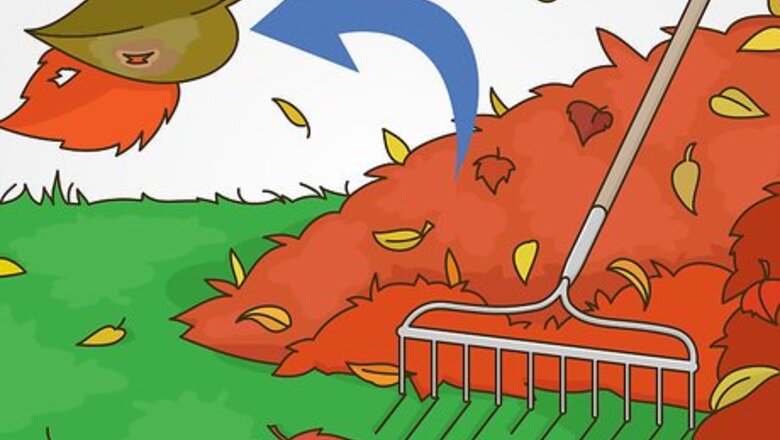
views
X
Expert Source
Tyler RadfordPlant Specialist
Expert Interview. 6 October 2020.
You can make your own mulch by collecting and repurposing organic matter found in your own yard, including leaves, grass clippings, and branches.
Making Leaf Mulch
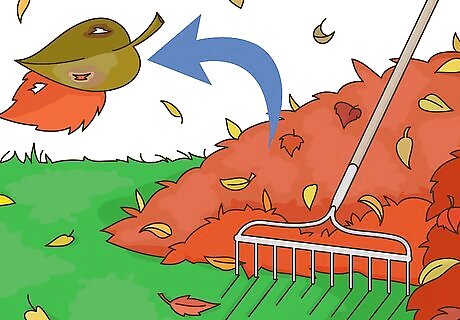
Collect leaves. Many homes have leafy trees and plants that provide a great mulch source, and leaf mulch is a good all-purpose mulch for your garden. You can either gather leaves by raking up ones that fall in the autumn, or collect the leaves that you prune off plants. Avoid using the leaves from walnut and eucalyptus trees, as these can prevent other plants from growing.
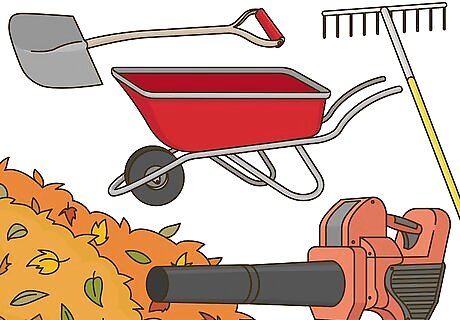
Rake the leaves into a pile. Use a rake or leaf blower to amass all your leaves into a large pile. To prevent damage to the lawnmower blades, pile the leaves on a flat section of lawn. Spread the leaves out into a layer that’s no more than 2 inches (5 cm) thick. Use a shovel and wheelbarrow to collect all the leaves if you don’t have a rake or leaf blower.
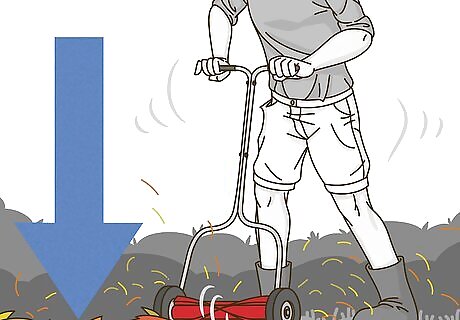
Shred the leaves with a lawnmower. Once the leaves are all piled together in a thin layer, turn on your lawnmower and mow over the pile a few times to chop the leaves into smaller pieces. Continue shredding until the pieces are dime-sized. Shredding the leaves will help them to decompose in the garden, and this will provide the soil with nutrients. You can also use an electric leaf shredder to chop the leaves. Use hedge trimmers to manually shred the leaves if you don’t have anything else.
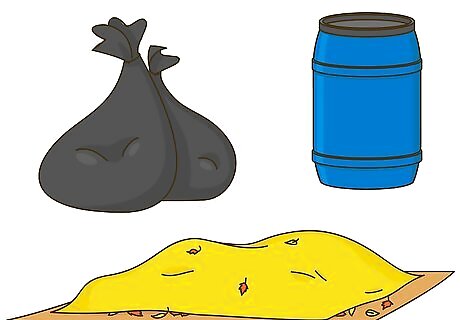
Use the mulch right away and store extras. Once the leaves have been shredded, they're ready to use as mulch in the garden. Extra mulch can be stored in a ventilated barrel, a large bag with air holes, or spread out on a tarp and covered from the elements. Once the leaf mulch is ready, you can also combine it with other mulch materials from around the yard. The longer the mulch is stored, the more nutrients it will lose. Mulch that is stored in low or no ventilation areas will begin to ferment and release high pH toxins, which are deadly to plants.
Making Mulch Combinations
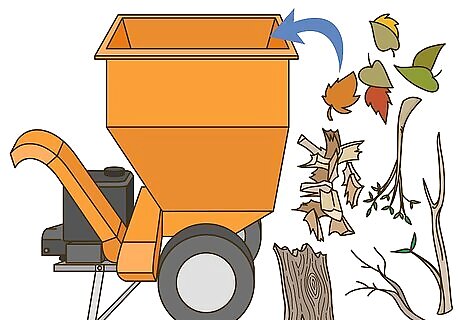
Chop up tree branches, bark, and trimmings. Wood also makes great mulch, and you can make wood or bark mulch from organic matter from around the yard. Go around your house and collect fallen branches, bark, or tree trimmings that you pruned from your plants. Put on safety glasses and process the wood and bark through a wood chipper to make a mulch. Bark and wood mulch can be used on its own or combined with leaf mulch. Wood mulch is ideal for established gardens and plants, but shouldn’t be used with young plants. You can rent a wood chipper from a hardware store if you don’t have one of your own. Wood decomposes more slowly than leaves, so this would be a good mulch for long term use.
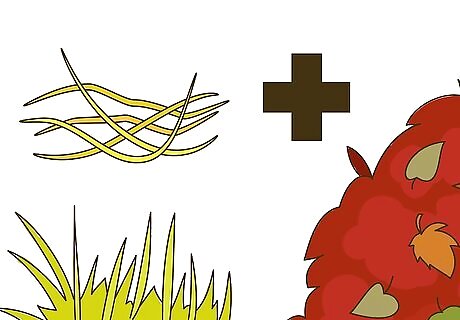
Collect grass clippings to add to the mulch. Grass clippings make an ideal addition to leaf mulch, though they aren't as effective when used alone. After mowing your lawn, rake up the grass clippings. Mix the clippings in with the leaf mulch and use a spade or pitchfork to mix them together. If your mower has a bag to collect grass, simply pour the contents of the bag into the leaf mulch when you're done.
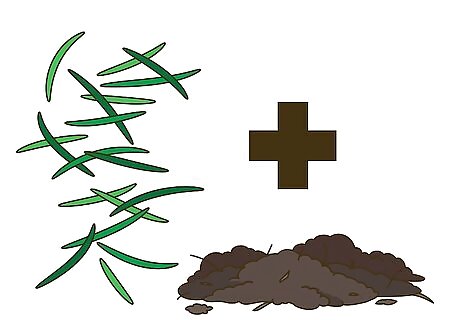
Rake up pine needles for your mulch. Like grass clippings, fallen pine needles can also be mixed with leaf mulch. Pine mulch is best used with acid-loving plants. Rake up needles from around your yard and combine them with the leaf mulch using a shovel or pitchfork.

Repurpose shredded paper. Newspaper and other types of paper from around the house can also be recycled and turned into mulch. Collect the paper and use an electric shredder or scissors to shred the paper into small pieces. Combine the paper shreds with the leaf mulch and use as normal.
Using Mulch in the Garden
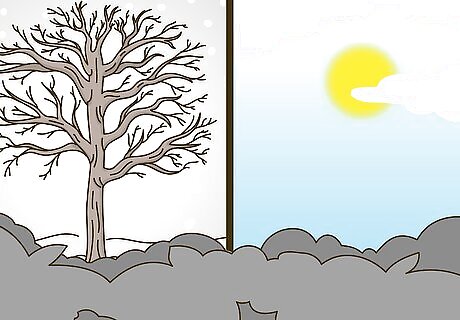
Mulch in summer and winter. In summer, mulch will help your gardens retain moisture and keep the roots cool. In winter, the mulch will protect the plants from frost and help to keep the soil warm. Summer mulches will decay over time, but winter mulch should be removed in spring. Ideal summer mulches include leaf mulch, leaf mulch mixtures, and compost. Ideal winter mulches include pine needles, straw, and bark.
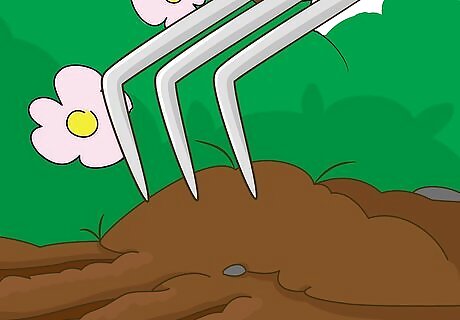
Remove old winter mulch. In the spring when you start gardening again, remove the winter mulch that protected the gardens during colder weather. You can add the removed mulch to your compost pile. Winter mulches don’t decompose as quickly as summer mulches, so it’s important to remove them in summer so you can add more nutrient-rich mulches to the soil.
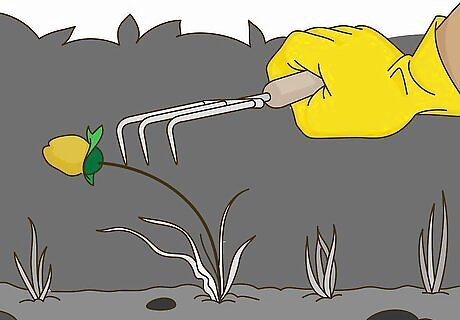
Pull out weeds. Before adding mulch to the garden, go around and pull out all the weeds you find in the bed. Otherwise, the mulch will protect the weeds and allow them to thrive. This will also create unwanted competition for the plants you're actually trying to grow.
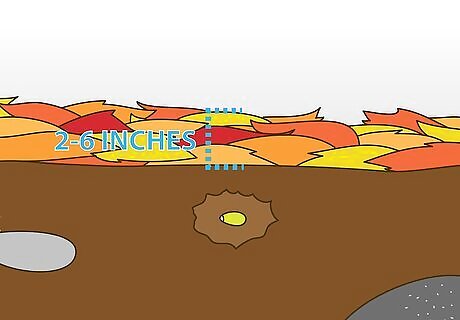
Add several inches of mulch to your gardens. Apply the mulch after you’ve finished planting in spring, or when you finish preparing the garden for winter. Use a shovel or rake to spread a 2- to 6-inch (5- to 15-cm) layer of mulch over the garden bed: In shadier areas, use 2 to 3 inches (5 to 8 cm) of mulch In sunny areas, use 3 to 4 inches (8 to 10 cm) of mulch In really hot and sunny areas, use up to 6 inches (15 cm) of mulch.
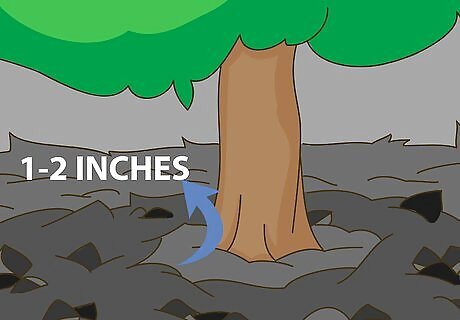
Make a well around the base of the plants. After you spread the mulch out over the garden bed, use your hand or a spade to pull the mulch away from the base of the plants. This is especially important in shady areas, because it will protect the plants from mold, rot, and insects. Providing some distance between the plant and the mulch will also allow air to circulate the plant, providing ventilation that is essential for healthy growth. Leave 1 to 2 inches (2.5 to 5 cm) of space between the mulch and the base of the plants, or enough room so the mulch isn't touching the plants.




















Comments
0 comment